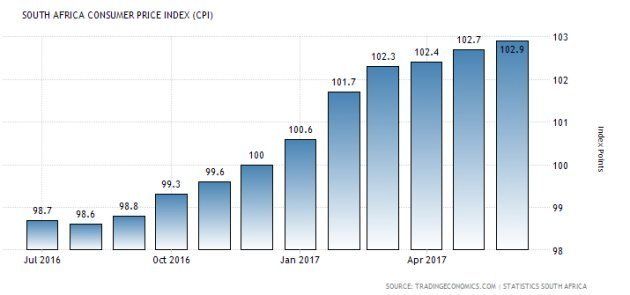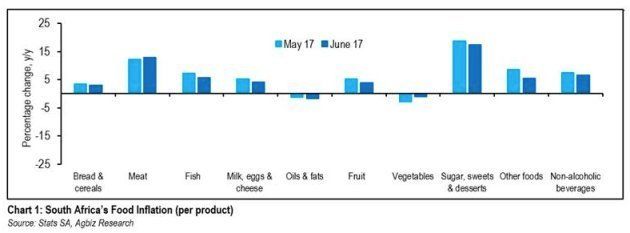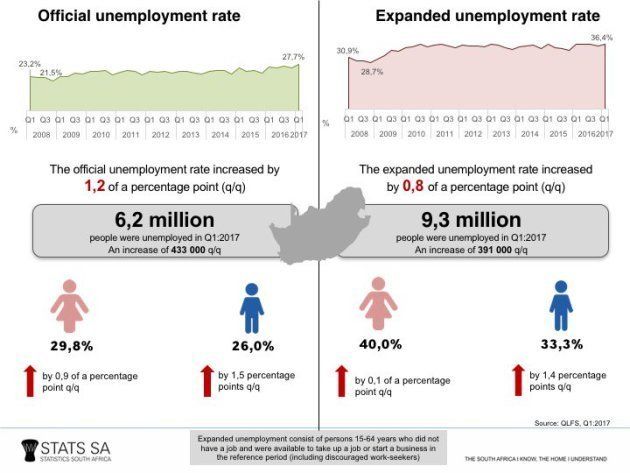
South Africa's unemployment remains a major concern and our economy has taken more than just a few knocks this year. South Africa was downgraded to sub-investment grade, or junk status, following the shock executive reshuffle by President Jacob Zuma. This move invariably led to less money for critical services such as housing, education and sanitation.
Despite long periods of positive economic growth, unemployment remains one of the key challenges faced by South Africa. StatsSA will be publishing the second quarter rate in the Quarterly Labour Force Survey on Tuesday, and data on producer inflation. It will be interesting to see how we fair as a country and to ascertain what can be done to ensure that our unemployment reading does not nosedive into further decline. Here are a few things to keep in mind.
1. Technical recession
SA officially entered a technical recession after our gross domestic product declined 0,7 percent during the first quarter of 2017. A technical recession is based on two consecutive quarters of negative growth. Our GDP in the fourth quarter of 2016 contracted by 0,3 percent, meaning our economic output has been shrinking and that economic activity was on a steady decline.
2. Consumer price index

The above table showcases the prices paid by consumers for a basket of goods and services and this is linked to inflation and food prices.
3. Inflation
According to economist Wandile Sihlobo: "Last month's food inflation figures show the significance of meat within the food basket. All products decelerated from the previous month's levels with the exception of meat which remained elevated and therefore, sustaining food inflation at 6,9 percent. The uptick in meat inflation mirrors the remaining effects of the 2015-16 El Niño induced drought in the livestock sector. As farmers continued to restock their herds, the slaughtering activity eased a bit with that resulting in the increase in meat prices."
"Overall, meat remains a key upward risk in food inflation due to the aforementioned factors. Apart from that, all other food products could continue to decelerate in the coming months owing to large supplies," he said.

4. Declining employment rate
The rising figure of jobless South Africans is likely to remain in steady rise, according to StatsSA, unemployment in SA is at its highest level since September 2003, with the biggest increase in the unemployment rate observed in the Eastern Cape which increased by 3,8 percentage points to 32,2 percent.
Employment increased in three industries last year by 18,000, from the period between September 2016 to December 2016; these aforementioned industries are trade, business services and manufacturing. This is a great feat, however, the following industries - community services, construction, mining and transport - saw no such luck as these industries saw decreases ranging from 0.2 percent to 3.0 percent.
Statistics South Africa paints a dire picture on the canvas of SA's economy in 2017. There were approximately 500,000 extra people in employment in Q1:2017 compared to the same period last year. The year-on-year employment growth was driven by manufacturing which tabled at 145,000 construction at 143,000 and finance closing in on 152,000.

SA's recovery in output has been weak, this has been mimicked in the decline in employment and labour productivity.
As is par for course, the group affected the most by unemployment is the youth. Of the 433,000 people who joined the ranks of the unemployed, approximately 58 percent were young people aged 15 to 34 increasing the youth unemployment rate by 1,6 percentage points to 38,6 percent. If these stats are anything to go by, the unemployment rate has remained virtually unchanged throughout the year.
